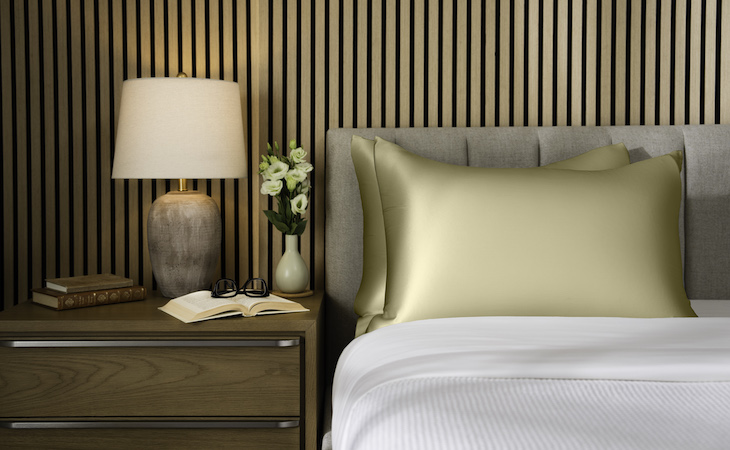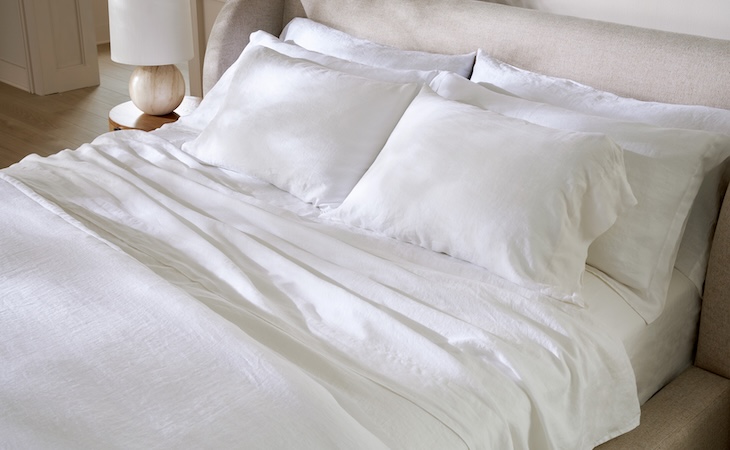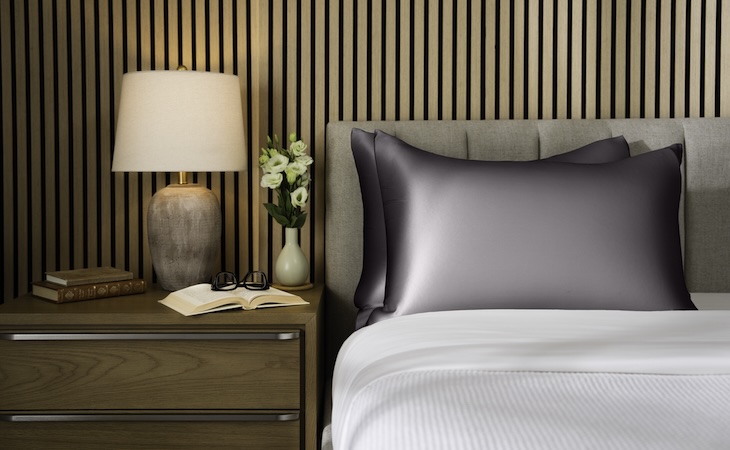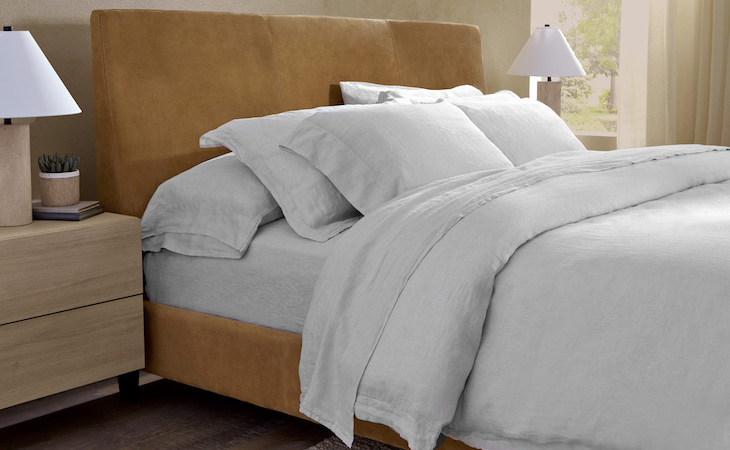One of the best tips I ever learned in my time as a beauty editor was to sleep on a silk pillowcase. Not only is silk super-soft and comfortable, but it also has quite a few benefits for your skin and hair.
In fact, ever since I started using a silk pillowcase a few years ago, I’ve noticed my skin has fewer creases in it and my hair is less rough and frizzy when I wake up in the morning. While silk is an excellent option for all skin and hair types, it’s an especially good choice for people with sensitive skin, acne, and curly hair.
Ready to hop on the silk pillowcase bandwagon? Keep reading to learn all about the benefits of sleeping on a silk pillowcase and find out how to choose the right silk pillowcase for you.
Benefits of using a silk pillowcase
Silk is a 100% natural fabric made from the secretions of a silkworm. It’s soft, smooth, and lightweight. Here are the top reasons to choose a silk pillowcase:
Silk keeps allergens at bay
Silk is a high-quality natural fiber that can help reduce allergy symptoms. Because the silkworm spins away silk like a cocoon to keep predators away, silk has natural protection against allergens like pet dander and dust mites. That makes it ideal for people with sensitive skin or allergies.
Silk prevents skin irritation
“Unlike most traditional fabrics used for pillowcases, silk is extremely smooth,” says Geeta Yadav, MD, board-certified dermatologist in Toronto. “This allows the skin to glide across the pillowcase as a person tosses and turns at night.” Other materials can rub and pull at your skin, which could irritate people with acne-prone skin.
Silk limits creases on the face
Due to its inherent smoothness, silk is ideal for those concerned with skin aging. “Because the skin can more easily move across the fabric without getting ‘stuck,’ it is less likely to create creases on the face,” explains Yadav.
Silk helps your skin retain moisture
“Silk is also less absorbent than cotton, so it won’t strip the skin of its natural moisture and oils,” says Yadav. “Over time, this can lead to smoother, younger, and healthier-looking skin.” Silk also won’t absorb the products you put on your face so you can rest assured your treatments will work while you sleep.
Silk protects hair from breakage
Shelly Aguirre, stylist at Maxine Salon in Chicago, notes some fabrics can cause friction and breakage. Because silk is so smooth, it helps hair glide instead so you avoid friction. “Less friction helps prevent hair breakage,” says Aguirre. Fine hair, which is often prone to breakage, can particularly benefit from a silk pillowcase. “Blonde hair [also] tends to be more fragile, and silk can help prevent more damage,” says Aguirre.
Silk wards off frizz
If you have curly hair like me, then you’ll want to get your hands on a silk pillowcase. “Curly hair tends to get frizzy with the friction of cotton, but silk will help the hair glide instead,” says Aguirre.
Silk pillowcase FAQs
Is it good to sleep on a silk pillowcase?
Sleeping on a silk pillowcase can be a great idea if you have acne, sensitive skin, or are concerned about wrinkles. It can also help shield breakage-prone hair from damage and keep curly hair frizz-free.
What are the pros and cons of silk pillowcases?
Like any bedding material, silk has its pros and cons. Silk pillowcases are soft, smooth, and lightweight, making them ideal for people with various skin and hair concerns. But because silk doesn’t absorb moisture as well as cotton, it might not be the best option if you sleep hot. Silk can also be harder to care for and come with a higher price tag than other fabrics.
Is sleeping on silk good for your skin?
Silk won’t tug at your skin the way other materials potentially could, making it a good choice if you’re someone susceptible to irritation or creases. It also helps your skin retain moisture, which could, in turn, lead to smoother and younger-looking skin.
How do I choose the right silk pillowcase?
Look for a silk pillowcase made of 100% pure mulberry silk. This is the highest-quality type of silk you can find. It’s natural, odorless, and hypoallergenic. Mulberry silk comes from the Bombyx mori silkworm, whose diet consists exclusively of leaves from the mulberry tree. (Not sure which pillowcase size to buy? Here’s a rundown of the most common pillowcase sizes.)
What’s the best momme silk for a pillowcase?
Silk weight is measured in units of momme, also sometimes referred to as mm. Most silk pillowcases fall between 19 momme and 25 momme. The higher you go within that range, the thicker and more durable the silk.
What’s the difference between a silk pillowcase and a satin pillowcase?
Silk and satin are two different things. Silk is a natural material made from the secretions of a silkworm. Satin is a type of weave and is usually made up of a blend of silk and synthetic materials like polyester, nylon, and rayon.
Is it better to sleep on silk or satin?
A satin pillowcase made of synthetic materials just can’t compare to a genuine silk pillowcase. 100% natural silk is soft, smooth, and hypoallergenic. It’s also more durable and will last you longer than satin.
Beyond silk pillowcases for skin and hair
Using a silk pillowcase isn’t the only way to take care of your skin and hair while you snooze. Add these other tips to your nighttime routine to maximize your beauty sleep:
- Apply an overnight serum. “These have the highest doses of active ingredients, like AHAs [alpha hydroxy acids] or retinol,” says Yadav. “They’ll help stimulate cellular turnover during your body’s peak hours of regeneration.” Accelerated cellular turnover triggers collagen production. “In addition to making skin look younger and smoother, that new collagen will also help blemishes heal,” explains Yadav.
- Moisturize, moisturize, moisturize. “Nighttime is a great time to use an ultra-hydrating cream and to be generous about it,” says Yadav. “It will help the skin repair and look more rested and glowing in the morning.”
- Swap your sheets and pillowcases regularly. “To keep your skin healthy, you should wash your sheets at least once a week, if not more,” suggests Yadav. “This will help prevent bacteria buildup, which can reduce breakouts.” If you can’t keep up with washing your sheets that often, at least consider washing your pillowcases more frequently, especially if your skin is oily or prone to blemishes. When it comes to choosing a laundry detergent, look for one without dyes or fragrances since those can irritate the skin. All Free & Clear and Seventh Generation Free & Clear are great formulas to try, says Yadav. (Don’t forget to wash your pillow too: Here’s how to wash your pillow properly.)
- Tie your hair up. “Putting your hair in a loose ponytail or brand can keep your hair from damage at night as well,” says Aguirre. Use a scrunchie (bonus if it’s made of silk!) or no-pull hair tie if your hair is on the finer side.
- Prioritize eight hours of sleep a night. As Yadav points out, getting eight hours of quality sleep will go a long way toward improving your skin’s appearance. So power down your phone, enjoy a warm soak in the tub, and do some gentle yoga stretches to prime your mind and body for a good night’s sleep.
Choose the best silk pillowcase for your skin and hair
Ready to upgrade your pillowcase and start experiencing your best beauty sleep yet? Saatva offers a premium
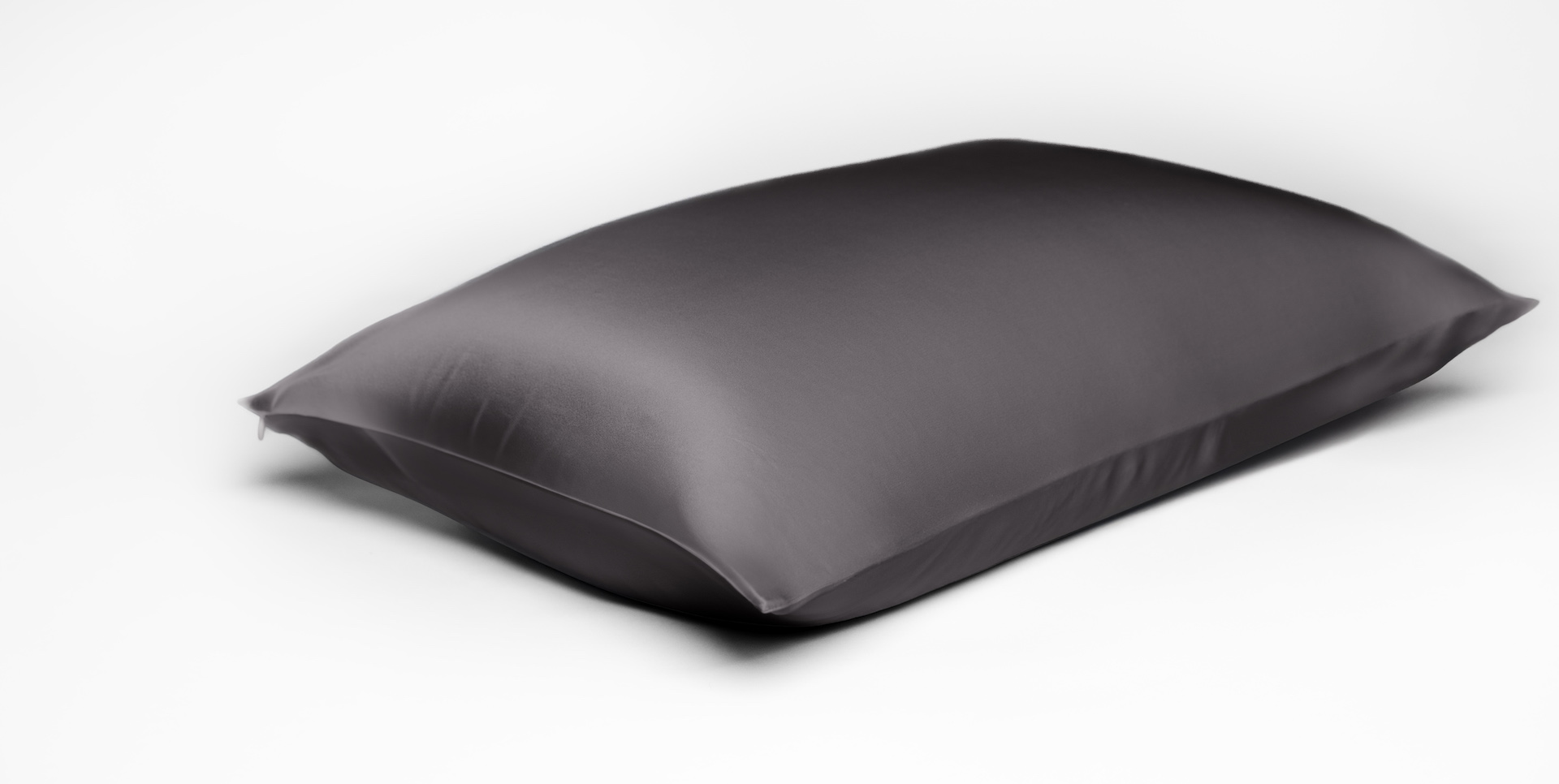
100% mulberry silk helps protect hair and skin while you sleep
made from 100% mulberry hair to help protect your skin and hair while you sleep.
The long-fiber mulberry silk in a charmeuse weave has an extra smooth and luxurious feel that lessens friction against skin and hair to prevent creases and product transfer and reduce frizz and hair breakage.

